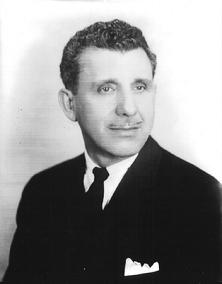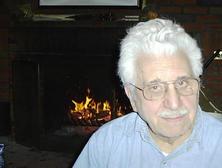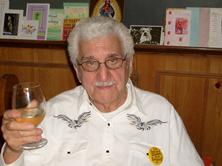


This story is from the late great Chiropractor, Dr. Pasquale Cerasole. For 33 years he practiced seven days a week in Brooklyn, New York. He only took three vacations during that time and saw well over 150 patients per day, and 1,250 people per week on average by himself. In 1980, he took down his shingle, and retired from active practice. He lived to be 99 years old, and never stopped working.
Dr. Pasquale started a group called Cell-F center, dedicated to assisting individuals discover and develop their inborn abilities. Meetings were held weekly, teaching Chiropractic philosophy and adjusting to doctors and students, and open to the community. These meetings continue today, spreading his wisdom to the next generation.
This expert below is taken from Pasquale’s website- http://cell-fcenter.com/home.html. Check it out to learn more about him and see pictures and videos.
“When I was three years old, I was vaccinated for polio and I received post vaccinal encephalitis from the vaccine. For three months doctors at that time said I would not live,” Dr. Pat explained. “Well, I made it but I was always sick and I tried everything. Finally, many years later, someone told me about chiropractic and I got well through chiropractic.”
His patients were as dedicated to him as he is to chiropractic.
“My own receptionist was one of my first patients. She was a very, very sick woman. No one could make any diagnosis. She was only about 80 pounds when I got her. She was so desperate, she went all over, to spiritualists and so forth and so on,” Dr. Pat said. “So, when I came back from the service I opened up (my practice) and her husband heard about me and after about eight months of adjusting, she began to feel better.
“After I set up this building in 1950, I asked her if she would like to be my receptionist and she said she would and she stayed with me right up until 1980,” he continued.
When Dr. Pat refers to his “building,” he refers to the structure he built 57 years ago which served as his office, his living quarters and an auditorium for his lay lectures. His office was on the first floor, his living quarters on the top floor and the auditorium, which seats 100, is in the basement.
Dr. Pat’s most memorable and rewarding experience still gives him “goose pimples.” He tells the story like this. “This woman came in with her young child, about eight or nine months old, and the child was something like a rag doll. She couldn’t see, couldn’t hear, couldn’t talk and the child got this way because she had a middle ear infection which hit the brain and this child went into a coma and remained that way. So, the woman was told to institutionalize the child because no one would be able to restore her,” he explained.
“She heard of chiropractic and she came into the office and I told her I didn’t know what could be done but at least give the child that much of a chance. So, three times a week I adjusted her and after four months, we seemed to have no response at all. This child didn’t seem to respond a bit. But at the end of four, the child was on the adjusting table and, my receptionist used to assist me while I adjusted, and this child, for the first time, started to move her eyes from side to side. Prior to that, she stared. And then she looked over and she saw her mother and she said, ‘Ma Ma.’ Of course, the mother started crying, my receptionist started crying and I got the goose pimples,” he continued.
Dr. Pat said today his patient is somewhere in her 40s, is completely healed and has a job as a bank teller. He said, “I’ve had a lot (of experiences) but I just keep thinking of when that child was on the table and she just moved her eyes from side to side and uttered her first words. That’s enough to get you.”
His advice to the young doctors to whom he has turned over the “limelight” is to believe in what they are doing. “They’ve got to feel that the profession, that chiropractic, is something unique. Of course we need an education, but that unique feeling, that courage of one’s conviction can only be had through himself or herself.
“We’ve got to stop trying to make ourselves bigger than chiropractic. I believe what the good Lord has blessed me with is that chiropractic manifests through me but I do nothing without that manifestation.”
Pasquale was ahead of time. The chiropractor’s chiropractor. His passion, dedication to the profession and a lifetime of service to people inspire me everyday.
